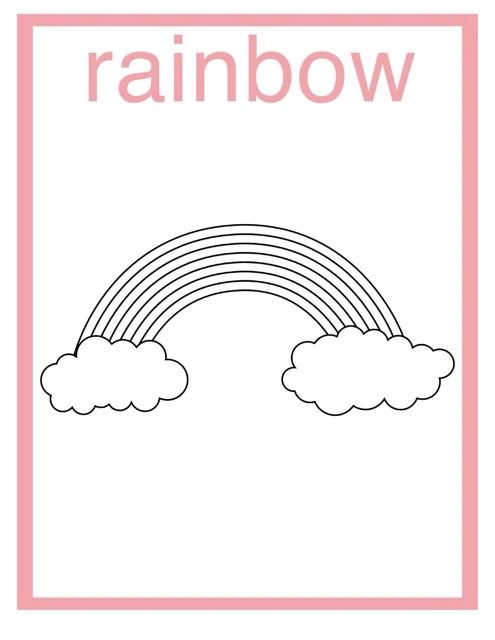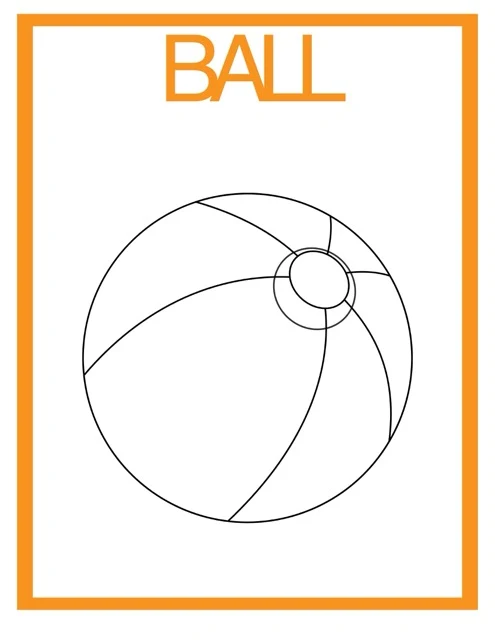Coloring For Fun: A Review
"Coloring For Fun: A Children's Activity Book" is reviewed, highlighting its suitability for preschool and early elementary children. The book's design, featuring simple line drawings of diverse themes (animals, food, vehicles), aims to develop fine motor skills, creativity, and color recognition. Educational applications are suggested for classroom use, including activities focusing on color and shape recognition, and storytelling. Finally, minor improvements, such as specifying page perforation and detailing image categories, are recommended.
Coloring For Fun: A Children's Activity Book
Briefing Doc: Coloring For Fun: A Children's Activity Book
Overview: This briefing document reviews the main themes and key features of "Coloring For Fun: A Children's Activity Book," based on the provided source materials, including a FAQ, a study guide, and sample coloring pages.
Target Audience: The target audience for this coloring book is preschool and early elementary children, as indicated by the "Study Guide." This is supported by the simple line drawings and subject matter, which cater to young children's interests.
Educational Benefits:
●
Fine Motor Skill Development: Coloring within the lines requires precision and hand-eye coordination, strengthening fine motor skills crucial for writing and other tasks.
●
Creativity and Imagination: The absence of specific coloring instructions encourages children to use their own color choices and interpretations, fostering creative expression. ("Study Guide" mentions "Children are encouraged to use their own imagination and creativity to color the pictures as they desire.")
●
Color Recognition: Coloring exposes children to various colors and helps them learn color names, improving their color recognition skills.
Visual Appeal and Content:
●
Simple Line Drawings: The images feature clear and bold outlines, making it easier for young children to color within the lines.
●
Variety of Themes: The coloring book includes a diverse range of images, encompassing animals, objects, food, toys, and transportation, catering to a broad spectrum of interests. Examples include a cat, crab, pig, bike, car, ice cream, watermelon, rocket, ball, etc. ("Study Guide" states, "The images in 'Testing Theme: Coloring For Fun.pdf' represent themes like animals, transportation, food, and everyday objects.")
●
Colorful Frames: Each image is enclosed within a bright and colorful square frame, adding visual appeal and attracting children's attention.
Educational Applications:
●
Color Recognition Activities: Teachers can use the coloring book to introduce and reinforce color names, engaging children in activities where they identify and color objects based on specific colors.
●
Shape and Object Recognition: The book can be used to teach basic shapes and objects, prompting discussions about the characteristics and names of different items depicted in the images.
●
Storytelling and Creative Writing: Children can color the images and then create their own stories or descriptions based on the pictures, stimulating language development and imagination.
Discrepancies and Suggestions:
●
Perforation: The FAQ doesn't specify whether the pages are perforated for easy removal. This information should be included for user convenience.
●
Detailed Image Descriptions: The FAQ could provide a more comprehensive list of image categories and examples to give potential buyers a better understanding of the book's content.
Overall Impression: "Coloring For Fun" appears to be a well-designed and engaging coloring book for young children. Its simple images, variety of themes, and educational potential make it a suitable tool for both home and classroom settings.
Coloring For Fun: A Children's Activity Book
FAQ: Coloring For Fun
1. What is the purpose of this coloring book?
This coloring book is designed to provide a fun and engaging activity for children. Coloring can help develop fine motor skills, creativity, and color recognition.
2. What kind of pictures are included in the coloring book?
The coloring book features a variety of simple and appealing images suitable for children, including animals, objects, food, and toys.
3. Are the pictures appropriate for all ages?
The pictures are primarily designed for young children due to their simplicity. However, older children and adults who enjoy coloring may also find them enjoyable.
4. What materials can be used to color the pictures?
Children can use crayons, markers, colored pencils, or any other coloring medium they prefer.
5. Are there any instructions or guidelines for coloring?
No specific instructions are provided. Children are encouraged to use their imagination and creativity to color the pictures as they wish.
6. Are the pages perforated for easy removal?
The provided document does not mention whether pages are perforated. However, you can check the physical copy of the coloring book for perforation.
7. Is this coloring book suitable for educational settings?
Yes, the coloring book can be a valuable tool in early childhood education settings. It can help children learn about different colors, shapes, and objects.
8. Can this coloring book be used as a gift?
Certainly! This coloring book makes a thoughtful and affordable gift for children on various occasions, such as birthdays or holidays.
Coloring For Fun: A Study Guide
Coloring For Fun: A Children's Activity Book Study Guide
Short Answer Quiz
Instructions: Please answer the following questions in 2-3 sentences each.
1.
What is the primary purpose of "Coloring For Fun: A Children's Activity Book"?
2.
List three benefits of coloring activities for children.
3.
What types of images are included in the coloring book? Provide at least four examples.
4.
Are there any specific instructions or guidelines provided for coloring the images?
5.
Besides crayons, what are two other coloring materials that could be used with the book?
6.
Is "Coloring For Fun" considered appropriate for use in educational settings? Explain why or why not.
7.
Can "Coloring For Fun" be given as a gift? If so, what occasions would be suitable?
8.
Describe the visual layout and organization of the coloring pages in "Testing Theme: Coloring for Fun.pdf."
9.
Based on the images provided, what is the target age range for this coloring book?
10.
Examining the images, what themes or categories of images are represented in "Testing Theme: Coloring For Fun.pdf"?
Short Answer Quiz: Answer Key
1.
The primary purpose of "Coloring for Fun" is to provide an engaging and enjoyable activity for children while fostering the development of fine motor skills, creativity, and color recognition.
2.
Coloring activities can help children develop fine motor skills by strengthening hand-eye coordination and precision. They also promote creativity by allowing children to express themselves through color choices and imaginative interpretations. Additionally, coloring aids in color recognition and learning color names.
3.
The coloring book includes various simple and appealing images suitable for children, such as animals (cat, crab, pig), objects (bike, car), food (ice cream, watermelon), and toys (rocket, ball).
4.
No specific instructions or guidelines are provided for coloring the images. Children are encouraged to use their own imagination and creativity to color the pictures as they desire.
5.
Besides crayons, children can use markers, colored pencils, or any other coloring medium they prefer.
6.
Yes, "Coloring For Fun" is suitable for educational settings. It can be a valuable tool in early childhood education for teaching about colors, shapes, and objects, and for developing fine motor skills and creativity.
7.
Yes, "Coloring For Fun" makes an appropriate and affordable gift for children on occasions like birthdays, holidays, or as a simple gesture of kindness.
8.
The coloring pages in "Testing Theme: Coloring For Fun.pdf" are arranged vertically in two columns. Each page features a single image within a colorful square frame. The name of the image is printed above the picture in a playful font.
9.
Based on the simplicity of the line drawings and the choice of images, the target age range for this coloring book is likely preschool and early elementary children.
10.
The images in "Testing Theme: Coloring For Fun.pdf" represent themes like animals, transportation, food, and everyday objects.
Essay Questions
Instructions: Please compose well-developed essays in response to the following prompts.
1.
Discuss the educational benefits of coloring activities for young children, citing specific examples from the source material.
2.
Analyze the visual appeal of the images included in "Testing Theme: Coloring For Fun.pdf," considering factors such as line quality, detail, and subject matter. How do these visual elements contribute to the target audience's engagement?
3.
Explain how "Coloring For Fun: A Children's Activity Book" fosters creativity and imagination in young children.
4.
Compare and contrast the information provided in the "FAQ: Coloring For Fun" with the actual content of the coloring book images. Are there any discrepancies or areas where the FAQ could be more informative?
5.
Imagine you are an early childhood educator using "Coloring For Fun" in your classroom. Describe three different activities or lesson plans you could develop using the coloring book as a central tool.
Glossary of Key Terms
●
Fine motor skills: Small, precise movements involving the hands and fingers, like gripping a crayon or coloring within lines.
●
Color recognition: The ability to identify and name different colors.
●
Creativity: The ability to generate new ideas, solutions, or artistic expressions.
●
Engaging: Capturing and holding someone's attention and interest.
●
Target audience: The specific group of people a product or message is intended to reach.
●
Visual appeal: The attractiveness or interest generated by the way something looks.
●
Line quality: The characteristics of the lines used in a drawing, such as thickness, smoothness, or texture.
●
Detail: The amount of intricate elements or fine points included in an image.
●
Subject matter: The topic or theme depicted in a work of art.
●
Educational setting: An environment dedicated to teaching and learning.
●
Lesson plan: A detailed outline for a specific teaching activity, including objectives, materials, and procedures.


































